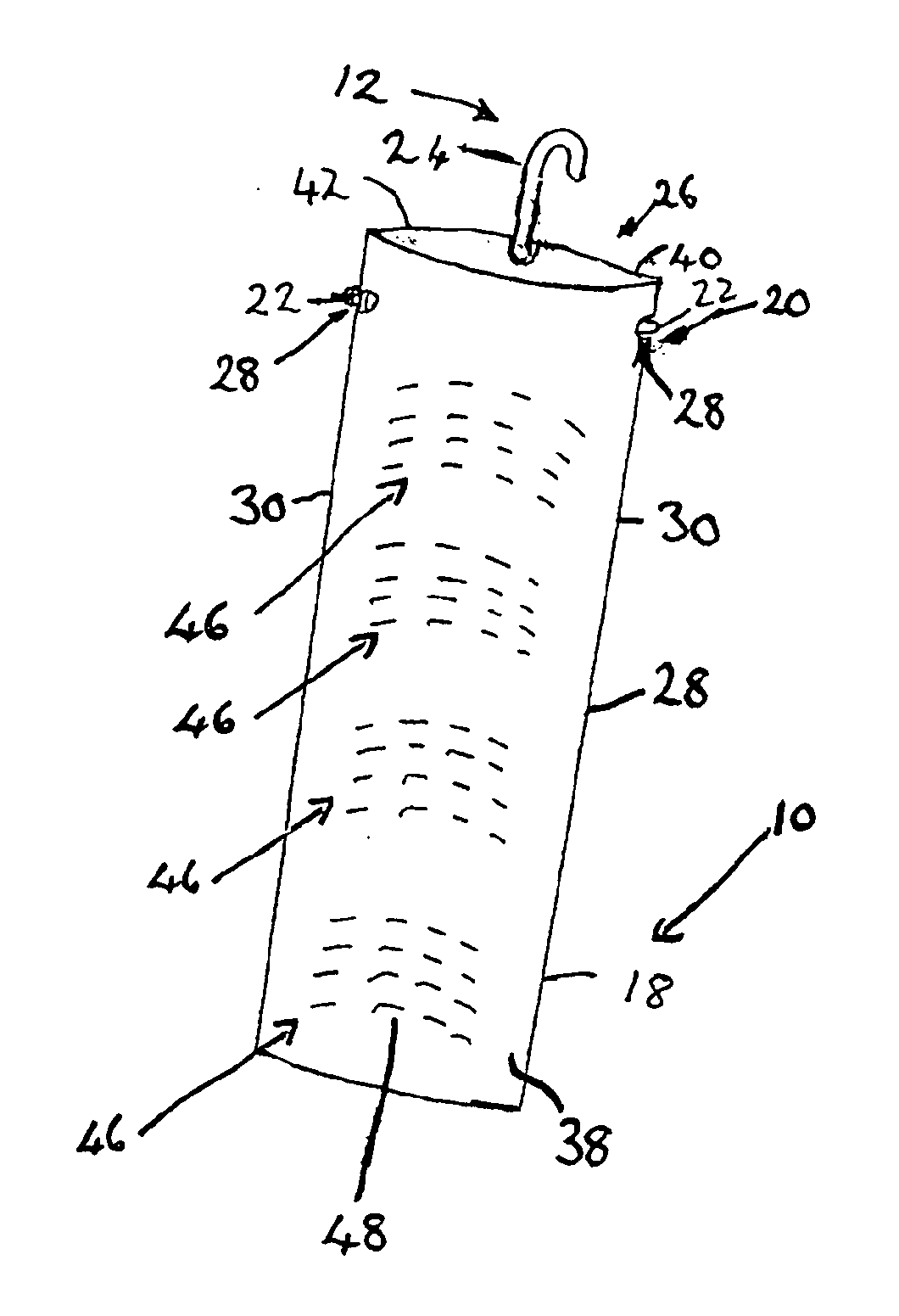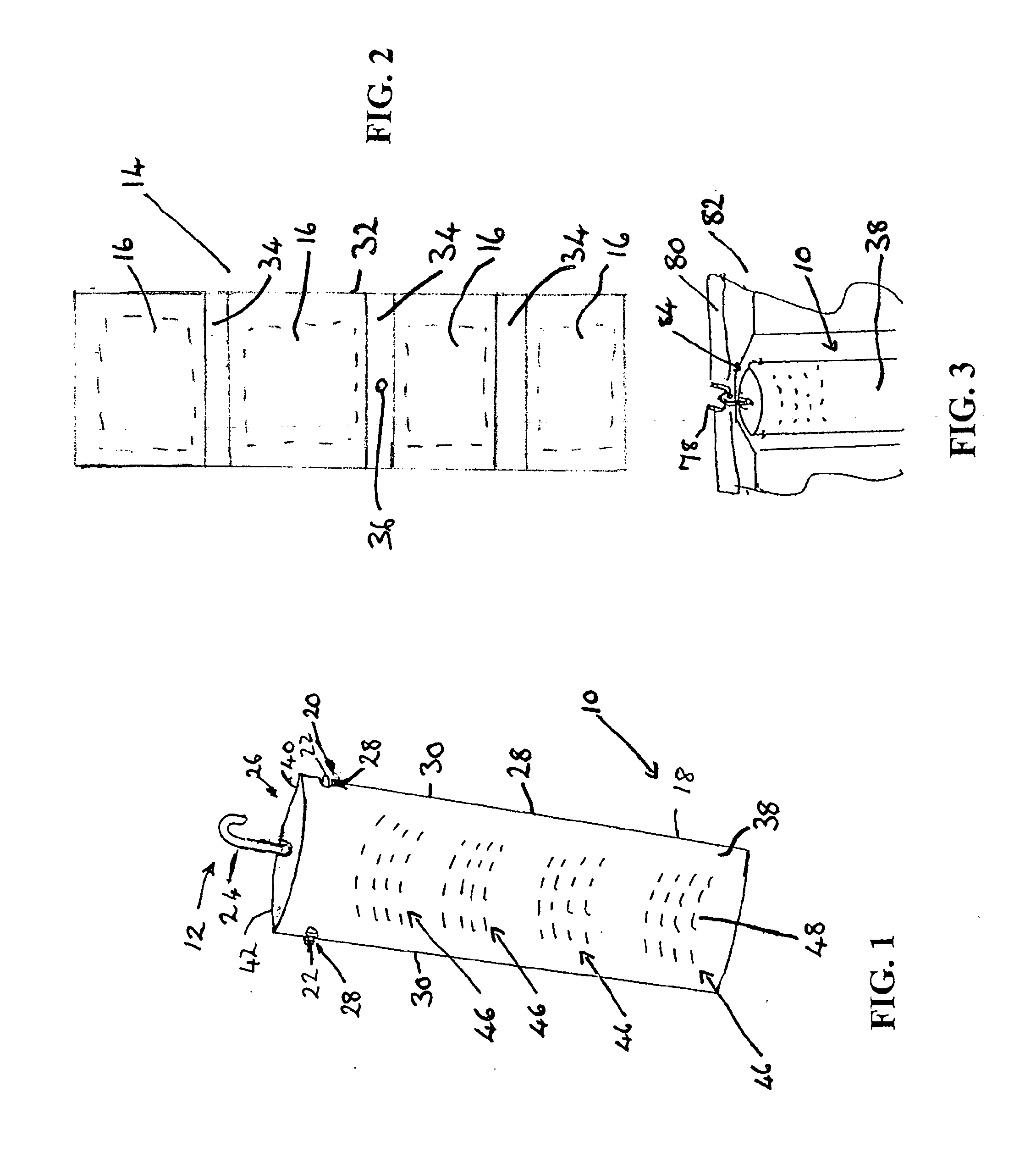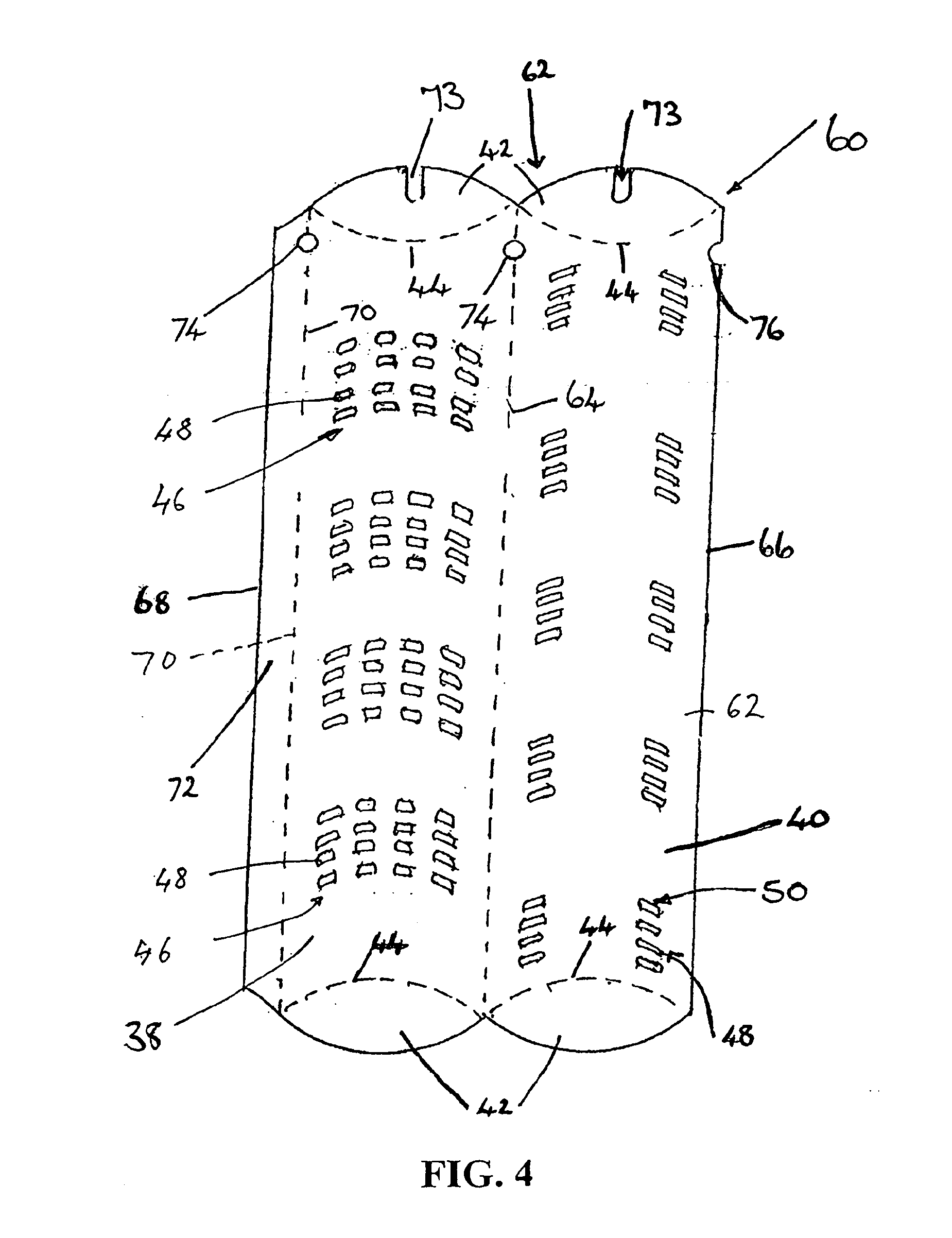Desiccant container and blank for forming a sleeve of a desiccant container
- Summary
- Abstract
- Description
- Claims
- Application Information
AI Technical Summary
Benefits of technology
Problems solved by technology
Method used
Image
Examples
third embodiment
[0076]FIG. 5 shows a schematic, three dimensional view of a desiccant container 100, in accordance with the invention. Desiccant container 100 comprises a protective sleeve 101 of a box-like shape. Protective sleeve 101 is made of corrugated cardboard and comprises rear panel 102 and front panel 103 (not visible) arranged opposite to each other. Front panel 103 and rear panel 102 are connected by side panels 104 such that a tube having a rectangular cross-section is obtained. In front panel 103 as well as rear panel 102 are provided openings 105 which allow access of humidity to the interior of protective sleeve 101. Openings 105 are arranged in groups 106 which comprise three subgroups 107 formed of 6 openings 105 each. Further are provided in rear panel 102 two slots 108 to receive tabs 109 in an interlocking relation.
[0077]Along an edge 114 of front panel 103 are provided two separate flaps 110 in a side by side configuration defining a narrow slot 111 between them. Each of flaps...
first embodiment
[0087]In FIG. 7a, b is shown the hanger to be used with the desiccant container according to the invention. FIG. 7a displays a perspective view whereas FIG. 7b is a view onto one side of the hanger. The hanger generally designated as 135 comprises a bar 136 made of a stiff material, e.g. metal or reinforced plastic. Centrally on bar 136 is mounted a hook 117, e.g. by welding. Bar 136 is thereby divided into two shoulders 137a and 137b each having the same length. Hook 117 is oriented orthogonally towards bar 136. This can also be seen from FIG. 7(b) which is a view along the axis formed by bar 136. Hook 117 comprises a straight leg 138 extending from bar 136. Straight leg 138 is continued by a first arcuated section 139 which is bent in a direction towards straight leg 138. First arcuated section 139 is continued by a second arcuated section 140 having a curvature opposite to the curvature of first arcuated section 139. Thereby together with straight leg 138 is formed a bottleneck w...
second embodiment
[0088]FIG. 7(c) is a perspective view of a hanger to be used for the desiccant container according to the invention. Hanger 135 comprises a hook 117 having a similar shape as the hook explained with the embodiment of FIG. 7(b) above. Mounted to straight leg 138 of hook 117 is a bent bar 141 comprising a shoulder 142 which is continued after a turn 143 by a straight section 144. Hook 117 is situated at about the center of straight section 144 and is oriented orthogonally to shoulder 142 and straight section 144.
[0089]FIG. 8 (a, b) shows top views of desiccant arrangements 154 to be used with a desiccant container according to the invention.
[0090]FIG. 8 (a) shows an embodiment of a desiccant arrangement 154 that may be used e.g. together with a hanger as depicted in FIG. 7a. The desiccant arrangement comprises pouches 145 which accommodate a desiccant. Pouches 145 are arranged side-by-side in a longitudinal and transversal directions thereby forming a blanket. Adjacent pouches are joi...
PUM
 Login to View More
Login to View More Abstract
Description
Claims
Application Information
 Login to View More
Login to View More - R&D
- Intellectual Property
- Life Sciences
- Materials
- Tech Scout
- Unparalleled Data Quality
- Higher Quality Content
- 60% Fewer Hallucinations
Browse by: Latest US Patents, China's latest patents, Technical Efficacy Thesaurus, Application Domain, Technology Topic, Popular Technical Reports.
© 2025 PatSnap. All rights reserved.Legal|Privacy policy|Modern Slavery Act Transparency Statement|Sitemap|About US| Contact US: help@patsnap.com



